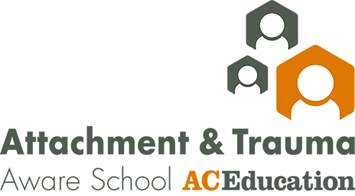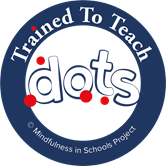What does it mean to be Trauma Informed?
At Educate U, we set high expectations for all children and young people but recognise the impact of emotional dysregulation on accessing the curriculum. Our goals include providing a supportive environment, celebrating positive behaviours, fostering strong relationships, and equipping learners with effective communication strategies. We prioritise a calm and informed school environment, aiming for awareness and consideration of others, and integrating between Spiritual, Moral, Social, and Cultural education. Consistency in positive behaviour support is ensured through staff training, and we systematically record data associated with positive behaviour management. Multi-agency support is provided for complex behaviour issues, and we determine suitable learning environments in consultation with parents, carers, and professionals. Safeguarding and compliance with statutory duties under the Education Act 2002 remain paramount in ensuring the safety and welfare of all learners and staff.
Understanding the message behind behaviour is crucial for fostering a harmonious and supportive environment at Educate U. We prioritise positive personal relationships, with a special emphasis on the repair phase, ensuring that every child feels a valued part of a supportive community where individual needs are respected. Recognising the pivotal role of staff behaviour as the main driver for change, we provide comprehensive training and background in developmental trauma to equip educators with effective tools.
Our Trauma-Informed Practices involve ongoing training on trauma-informed approaches and the use of P.A.C.E. language by staff. The mantra "All behaviour is communication" is emphasised a lot in our training sessions. We utilise resources from reputable sources such as Beacon House, Louise Bomber's work, and the Anna Freud Centre. Differentiating approaches based on individual strengths and challenges, we tailor strategies for Social, Emotional, and Mental Health Needs.
In terms of language and perception, we promote sensitive language, avoiding stigmatising phrases like 'challenging behaviour’, and recognising behaviour as a protective instinct, rather than a choice. Discussions focus on helping our children recognise warning signs and develop self-regulation strategies. Sensory and emotional regulation is addressed using models like the Zones of Regulation , to identify triggers and warning signs. Classroom staff actively model self-regulation strategies for both children and adults.
Educate U’s Trauma-Informed Approach seeks a deep understanding of learners' past experiences, triggers, and emotional challenges. Strategies guided by Trauma and Mental Health Informed Practitioners support learners identified as needing additional assistance. Our approach uses Trauma Informed language throughout the school day, underpinning all communication and interactions. This acknowledges the clear correlation between childhood adversities and long-term physical, emotional, and social outcomes.
The Trauma-Informed approach is delivered through staff interactions based on the Protect/Relate/Regulate/Reflect model and supported by the PACE approach - Play Acceptance Curiosity Empathy. This approach aims to help students feel safe, reducing the need for the ‘fight or flight mode’, and supporting a reduction in anxiety within school.
Under PACE, ‘protect’ involves ensuring warm greetings in all areas of the school, and training staff in warm, empathetic, playful, and curious modes of interaction. ‘Relate’ emphasises a whole-school commitment to enabling positive self-perception and relationships, providing repeated relational opportunities for learners. ‘Regulate’ involves using relational interventions to bring down stress hormone levels and implementing evidence-based interventions to repair psychological damage. ‘Reflect’ focuses on training staff in good listening, dialogue, empathy, and understanding, with time for reflection post-incident, and discussions about alternatives/choices. Staff also work to identify the messages behind learners' behaviours and provide options for expressing our feelings in more appropriate ways.
How our staff are trained to respond to children with trauma
- Attune to the child’s affect – Connect with the learner's emotional intensity, mirroring their feelings to build a positive connection around trauma. This helps the student understand and fosters a trusting relationship.
- Empathy – Recognise and affirm the learner's experience, even if different from others perspective. Staff should be supportive and understanding of the learner's feelings without dismissal.
- Containment – Be present with a learner's intense feelings, without absorbing or acting upon the emotion. Clear structures, boundaries, and consistent actions contribute to containment.
- Emotional Regulation – Lower toxic stress to tolerable levels, moving towards a state of calm. Calming conversations, timeouts, and sensory support are tailored to each learner for effective regulation.
- Use of Voice and Body Language – Use a calm and lowered tone to convey calmness, safety, and empathy. Ensure open and non-confrontational body language is used.
- De-escalation strategies – Trained in P&I techniques including de-escalation including distraction, redirection, humour, reflection, and calming techniques. Physical interventions are a last resort, trying to stick to focusing on non-physical methods but also understanding the need for our students to feel contained and maintain safety for all.
- Motional Profiling – Create a comprehensive snapshot for identified learners, outlining areas for support and development. Profiles involve collaboration between staff, parents, and the Pastoral and Behaviour Lead.
Terminology Accepted at Educate U
Dysregulated, Unsettled, Emotional, Distressed, Unhappy, Anxious, Communication through their behaviours, Crisis.
Trauma-Informed Approach
- Understand a learners' past experiences, triggers, and emotional challenges.
- Implement strategies guided by Trauma and Mental Health Informed Practitioners.
- Use Trauma Informed language throughout the school day.
- Acknowledge the correlation between childhood adversities and long-term physical, emotional, and social outcomes.
- Deliver the Trauma-Informed approach through the Protect/Relate/Regulate/Reflect model and PACE approach










